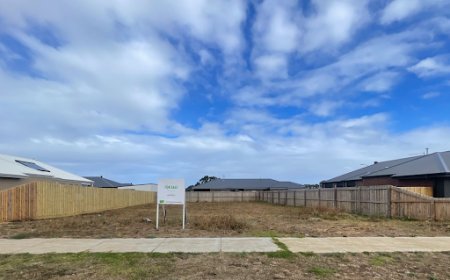Campus Management System Software SEO Checklist: Mastering On Page SEO Services for Schools
Master the essential SEO checklist for campus management system software websites. Learn how on page SEO services can help boost school visibility, traffic, and engagement.
Introduction
Digital transformation is reshaping the education sector. From virtual classrooms to paperless administration, schools are increasingly turning to software solutions that can simplify their operations. One such powerful tool is campus management system software. It handles everything from student admissions and class schedules to fee collection and communicationmaking it essential for modern educational institutions.
Yet, even the most feature-rich software can go unnoticed if not properly marketed online. Thats why a strong SEO strategy, especially on page SEO services, is key to ensuring visibility, reach, and user engagement. This article provides a simple yet complete SEO checklist tailored for school software providers aiming to improve their digital footprint and attract the right audience.
Why SEO Matters for Campus Management Software Websites
A well-optimized website helps software platforms appear higher on search engines when schools look for digital solutions. Most decision-makers begin their search online and often click on one of the top few results. Without proper on page SEO, a website promoting campus management system software may miss out on valuable traffic.
On page SEO services help optimize each page of a website, ensuring it is readable for search engines and helpful to users. This leads to better rankings, more visitors, and higher chances of conversions.
SEO Checklist for Campus Management System Software Websites
1. Use the Right Keywords
Start by identifying what terms your target audience is searching for. Keywords like campus management system software, school ERP, and student record system are common. Use these keywords thoughtfully within your website content.
Checklist:
-
Include the main keyword in the page title
-
Add it to the meta description and first 100 words
-
Use variations and long-tail versions across the page
-
Keep keyword density between 1% and 2%
2. Write Compelling Meta Tags
Meta titles and descriptions influence how your pages appear in search results. They should clearly reflect the content while encouraging users to click.
Checklist:
-
Title length under 60 characters
-
Description under 160 characters
-
Use the primary keyword in both
-
Ensure each page has a unique meta tag
3. Create Clear and Structured Content
Well-organized content helps users and search engines navigate your site. Break content into sections using headers and use short paragraphs for easy reading.
Checklist:
-
Use H1 for main titles and H2/H3 for subheadings
-
Divide information into logical sections
-
Use bullet points or numbered lists where suitable
-
Make sure text is simple and clear
4. Optimize for Mobile Devices
Many school administrators and staff use mobile phones to search for solutions. Your site should work smoothly across all screen sizes.
Checklist:
-
Responsive design that adjusts to phones and tablets
-
Easy-to-tap buttons and links
-
Readable fonts and balanced spacing
-
Mobile-friendly navigation menus
5. Improve Page Loading Speed
A slow-loading site can drive users away and affect search rankings. Speed also impacts how quickly visitors can access important information.
Checklist:
-
Compress images without losing quality
-
Minimize the use of heavy scripts or plugins
-
Use browser caching and clean coding practices
-
Check loading times using tools like Google PageSpeed Insights
6. Use Internal Linking
Internal links guide visitors through your website and help search engines understand its structure. They also keep users engaged longer.
Checklist:
-
Link related blog posts and feature pages
-
Use clear, descriptive anchor text
-
Avoid broken or outdated links
-
Include links in both the body content and footers
7. Add Optimized Images with Alt Text
Images help illustrate your product, but they also offer SEO opportunities. Properly named and tagged images contribute to better rankings.
Checklist:
-
Use images of the software dashboard and features
-
Name files clearly (e.g., campus-dashboard.png)
-
Add alt text with relevant keywords
-
Keep image file sizes optimized for fast loading
8. Create a Logical URL Structure
Clean URLs help both users and search engines understand what the page is about. Avoid complex or lengthy links.
Checklist:
-
Use lowercase, hyphen-separated words (e.g., /features/timetable-management)
-
Include keywords in URLs
-
Avoid using unnecessary parameters or numbers
9. Focus on User Experience (UX)
Search engines prefer websites that offer value to users. Easy navigation, informative content, and a clear call to action can make a big difference.
Checklist:
-
Provide clear buttons for demos, pricing, or contact
-
Add testimonials and success stories from schools
-
Use simple language suitable for educators
-
Highlight key features and benefits clearly
10. Add a Blog Section
A blog helps you share updates, industry trends, and how your software solves real problems. It also gives more chances to rank for various keywords.
Checklist:
-
Write regularly on topics like benefits of campus management system software
-
Use keyword-rich titles and headers
-
Include internal links to product pages
-
Share content on social media to bring in more traffic
Extra Tips for Long-Term SEO Success
SEO isnt something you do once and forget. Regular updates and reviews are necessary to keep your site relevant and competitive.
-
Revisit older content and refresh it with updated information
-
Monitor performance using Google Analytics and Search Console
-
Track your rankings for target keywords monthly
-
Keep learning about SEO trends and algorithm updates
Conclusion
Creating a powerful platform is only half the workensuring that schools can find it online is just as important. Campus management system software solves many problems for schools, but without proper on page SEO services, even the best solutions can remain hidden.
Following a clear SEO checklist ensures that your website ranks higher, attracts the right audience, and delivers a better user experience. From keyword usage to mobile optimization, each step in the process contributes to building trust and driving growth.
With the right SEO foundation, your educational software can reach more institutions and make a lasting impact in the digital education space.




























